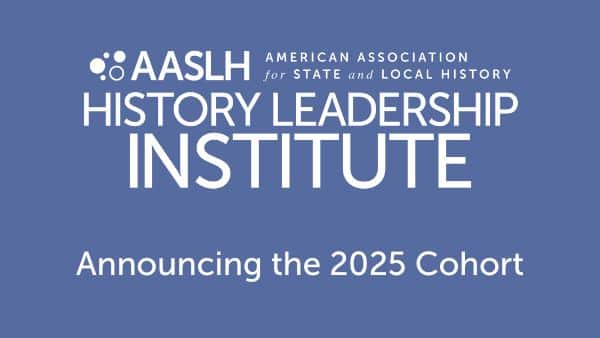
The Draper Spark!Lab, Lemelson Center for the Study of Invention and Innovation at the Smithsonian’s National Museum of American History.
One of the founding objectives of the Women’s History Affinity Group at AASLH is to ‘[foster] mentoring, professional development, and strongly encourage young women to strive for leadership positions within their professional organizations.” The “Women Who Mentor” blog series asks successful women from across the field to share their experiences and advice with women, as well as men, who are striving to advance in their careers.
Laurel Miller is the Interpretive Exhibits Manager at the Draper Spark!Lab, located in the Smithsonian Institution’s National Museum of American History in Washington, D.C.
How did you arrive at your present job position?
I am the manager of Draper Spark!Lab, a hands-on space for kids and their families to explore the invention process, at the Lemelson Center for the Study of Invention and Innovation in the Smithsonian’s National Museum of American History.My main job responsibilities are overseeing the floor staff,

Photo courtesy of the author.
volunteers, interns and daily operations of the space, including training, programming and evaluation. I came to this position after 8 years as a public program coordinator at the Smithsonian American Art Museum, and was intrigued by the similarities I saw between the way that artists and inventors see the world. Both use creative and new ways to communicate, problem solve and inspire!
How do you mentor other women (as well as men) in your work?
One of the things I love most about working at the Lemelson Center and in Spark!Lab, is the culture of experimentation and willingness to try new things. Maybe it will work or maybe it won’t, but either way we’ll learn something! This mentality hasn’t always come easily to me, and sometimes I do struggle with being open to the unexpected, but I’ve also grown so much as a result of that supportive environment from my colleagues. As a manager, I want to create or reinforce that same safe space for my staff, volunteers, interns and co-workers. Often, I’ve found that the best way to do that is to model the behavior you want to encourage. By being open to trying (and even failing) yourself, it shows others that it is OK for them to do the same and that they will all learn a great deal along the way. I hope that the way we work encourages other women in the field and young girls who come to Spark!Lab to participate, embrace what they don’t know and collaborate to create a better product or system.
Recently, I also had the pleasure of hearing Dr. Johnnetta Cole, the director of the African Art Museum, speak about her experience as a mentor to young women at the Smithsonian. I was struck by her extremely broad definition of what it means to be a “mentor.” Often we think of mentoring as career-long, dedicated relationships that exist along a vertical hierarchy, but Dr. Cole reflected on the fact that even short or indirect interactions can be just as meaningful if they have the same intention towards being of service to others. I thought that was a great reminder for both mentors and mentees alike.
What things have you learned or advice do you have for others starting in the field?
Knock on doors and say hello! I have never been turned down when I’ve asked a colleague, even someone very senior, to tell me more about what they do, how they got there, and what they’ve learned along the way. An informational interview over lunch or coffee can be an incredible low-stakes way to expand your network, gain insight into new career paths, and open up your perspective. Have an agenda or prepared questions to make the most of their time, but as I see it, even directors need to eat lunch, right?
What role models do you have in your life and/or work?
A friend of mine in grad school started a blog about horizontal mentors, and that has stuck with me for years. We all have those aspirational examples in our lives of people who have reached great heights and recognition in their careers, but there is also the person right next to you, at the same level, who might just be the bigger influence.
How does the work that you do further Women’s History?
Spark!Lab profiles female inventors, of all ages, who have done exactly those things to contribute to making the world a better place. For example, we have Amy Prieto, an associate professor of chemistry at Colorado State University and the founder of Prieto Battery, as well as Marlee Schevers, a 13 year-old who at the age of 9 invented the Solbrite Purse, her submission to the ePals Smithsonian Invent It Challenge. The Lemelson Center also has lots of blog posts and additional resources about women inventors in history and today. We believe everyone is inventive, but we have a unique role and responsibility to allow our visitors and colleagues, especially girls and women, to seem themselves that way, too. It starts with allowing yourself to think that you can, and should, participate in identifying and solving problems.
Please join us next week for the third installment of our “Women Who Mentor” series. But first, make sure to read our first installment, featuring Gemma Birnbaum of The National WWII Museum.



